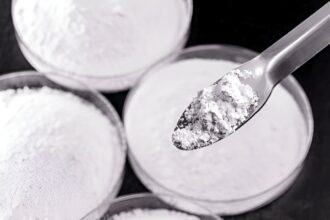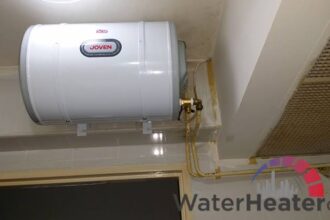Mild steel, together with aluminum, serves helpful functions in industries. Humans use Mild steel and aluminum in residential buildings and industrial equipment as well as vehicles and manufacturing tools. The two materials exist with distinct differences between them. This text explains the differences between these two materials through basic language.
What Is Mild Steel?
The composition of carbon steel includes mild steel as one of its categories. The carbon content in mild steel stays below 0.3%,whicht keeps its amount at a very small level. Due to its affordability and workability, aluminum material proves durable and inexpensive. Many industries utilize this steel material due to its properties.
The characteristics of mild steel include good toughness, even though the material remains soft. It can bend without breaking. The material becomes easily moldable after welding procedures.
What Is Aluminum?
Aluminum is a light metal. It is soft and shiny. You can find aluminum as components in cans as well as foils and airplanes. Aluminum stands as one of the many metallic elements that exist throughout the planet’s crust.
The material aluminum resists the same rusting process as steel does. The surface of aluminum develops a protective thin film. The protective coating formed on the surface defends the material from harm.
Weight Comparison
The main distinction emerges from their weight measurement.
- Mild steel is heavy.
- Aluminum is very light.
Aluminum material weighs approximately thirty-three percent less than steel. Things requiring light weight benefit from choosing aluminum products. Manufacturers use aluminum in airplane construction as well as bike frame production because of its weight benefits.
Strength Comparison
The strength of mild steel surpasses the strength of aluminum. Under sufficient weight and pressure, steel performs better. Steel shows better resistance to force when you strike it against both materials.
Aluminum is softer. Under a strong pressure level, aluminum has the potential to either fold or split. The material possesses enough strength for different types of employment activities. Aluminum combines with other metals to form robust metal alloys due to its properties.
Corrosion Resistance
Steel becomes rusted whenever it comes in contact with moisture or ventilation occurs. Outdoor locations face severe difficulties because of this issue.
Aluminum does not rust. Due to this layer, aluminum can sustain more damage. The resistance to decay in aluminum makes it appropriate for areas where rainfall or coastal conditions occur.
Cost
Aluminum costs more than mild steel. It is easy to make and buy. Building and machine manufacturers select this material for its affordability.
Aluminum is more expensive. In various applications, the total expense can be justified through strong reasons. The material reduces weight while showing resistance toward rust formation.
Workability
The material aluminum shows better workability during cutting procedures as well as drilling operations and shaping operations. Mild steel allows users to create diverse shapes in their projects.
Conventional welding procedures work better with mild steel, even though forming the material remains difficult. Most welders prefer using mild steel because welding becomes more effective due to its good sticking properties.
Uses of Mild Steel
The builders extensively use mild steel in various locations, including structures and machines.
- Buildings and bridges
- Car frames and parts
- Tools and machines
- Pipes and tanks
Strong structures benefit greatly from its applications. The material remains durable when properly protected against the development of rust.
Uses of Aluminum
Aluminum is common in:
- Airplanes and trains
- Car parts like wheels and hoods
- Kitchen items like pans and foil
- Windows and doors
- Bike frames
This material becomes the best choice for applications seeking both minimum weight and resistance to rust. HXSCO Aluminum Metal Supplier always makes sure to deliver high-quality metal.
Main Variations Between Mild Steel and Aluminum As Metals
- Weight represents a direct contrast since steel possesses more density than aluminum.
- Steel exhibits superior strength in addition to being tougher than aluminum.
- Rust affects steel, but aluminum exhibits resistance to it.
- Cost: Steel is cheaper
- The shaping process for aluminum requires less effort than for steel.
- The welding process requires less effort when working with steel compared to aluminum.
- Aluminum maintains a superior shine compared to steel, Read more.
Step-by-step guidelines for selection between the two:
- Think about the weight needed.
- Verify that the chosen metal faces exposure to water.
- Your evaluation of required strength should now be considered.
- Compare the prices for your project.
- Decide if welding is needed.
- Select your materials according to the final application needs, along with appearance requirements.
Environmental Impact
Both metals can be recycled. Recycling aluminum demands less energy consumption as compared to steel production. The process of manufacturing new aluminum products requires significant amounts of energy. More than 90% of the original energy consumption is saved through recycling.
Steel also recycles well. Building architectures together with automotive vehicles implement recycled steel in their construction. Using recycled metals contributes to environmental preservation on Earth.
Conclusion
Mild steel, together with aluminum, provides multiple beneficial applications. The metal delivers impressive strength together with excellent durability at reasonable prices. Aluminum is light weight and has reflective qualities and defense against oxidation decay. Each metal has pros and cons. Your decision will depend on the task requirements.
People who require affordable materials with substantial strength should select mild steel. Aluminum becomes the best choice when you require items that are lightweight with added rust resistance. The knowledge about their dissimilarities enables you to select the appropriate metal for specific tasks.

















